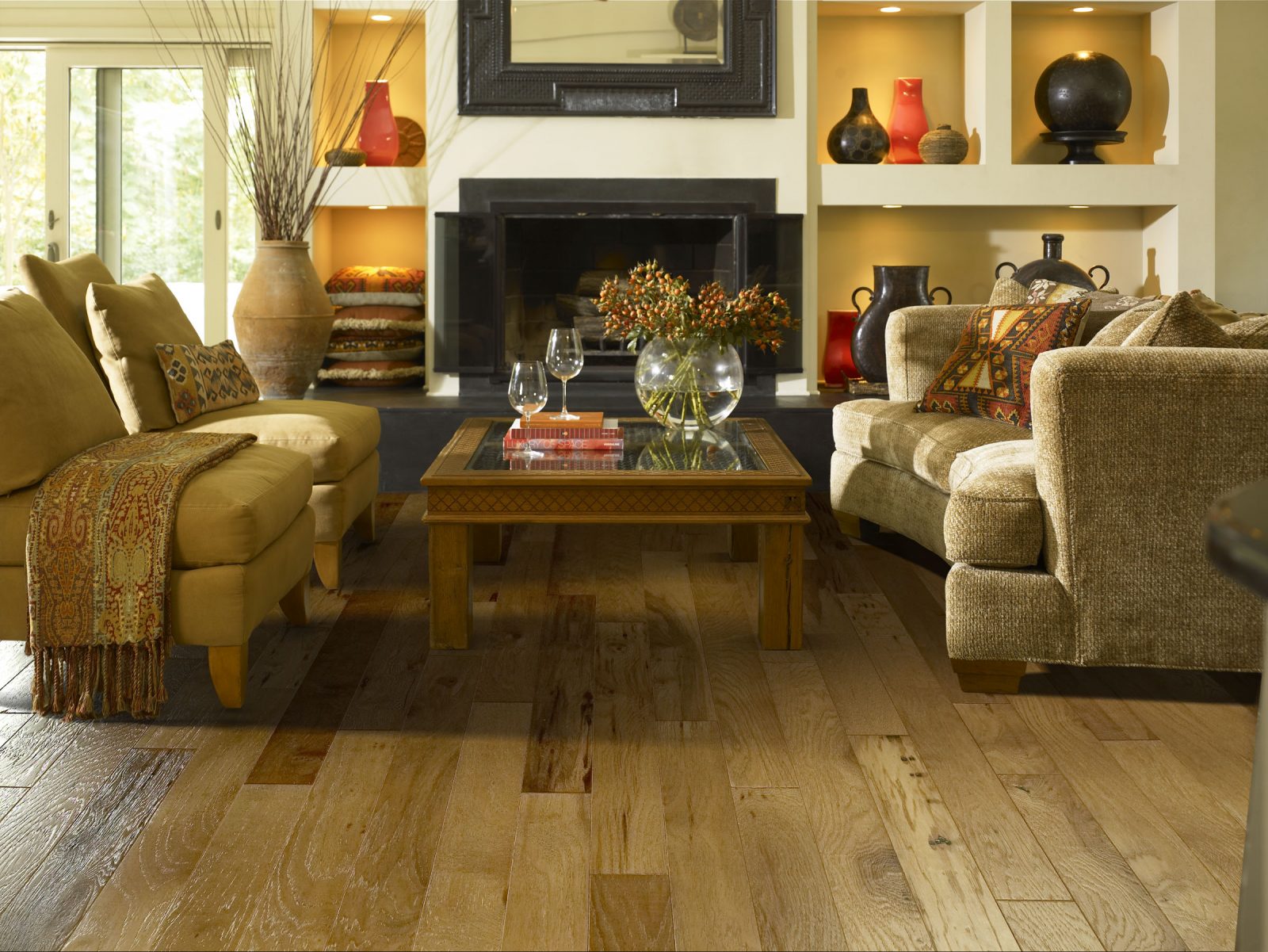What is Engineered Hardwood?
Do you love the look of wood floors, but aren’t sure about the expense, installation time and upkeep? Then engineered wood floors are a terrific alternative. As a matter of fact, about 40% of all prefinished hardwood flooring sold in the U.S. is actually engineered wood flooring.

What Is an Engineered Wood Floor?
Invented in the 1960’s, engineered wood floors are made from real wood, just like solid hardwood. The difference is what lies beneath the surface. Instead of one solid plank these boards are comprised of thin wood layers glued together under high pressure. This multi-layer construction allows for a more dimensionally stable plank that can be installed below, on or above grade. This means it’s typically less susceptible to the effects of moisture and humidity. Another reason home remodelers love it so much is that, unlike solid hardwood, engineered hardwood can also go directly over certain types of old flooring – this saves on demolition costs, mess and dust, and job duration.
A style to match your home
Engineered wood is available in wide, medium and narrow plank widths. It can be constructed from a variety of wood species including oak, maple, hickory, walnut, – even mango! Today, manufacturers have perfected the art of styling the veneer to mimic timeworn looks and finishes that recall the way wood used to be milled and finished by hand. Multi-dimensional staining, handscraping, chatter marks, and wirebrush are but a few of the effects that have continued to attract designers and specifiers.
Lower costs, less time wasted
Site-finished hardwood floors are installed in stages. One day to lay the floor, another to apply the first coat of stain or finish, and usually another coat the next day. That adds up to several days of labor and inconvenience as you can’t walk across your new floor until the finish dries. And the uniformity and appearance of the urethane application depend largely on the skill of the refinisher.
Engineered hardwoods typically come ready to install out of the box so the floor is ready for you to walk on it as soon as it is installed. Unlike solid wood floor, you can often install engineered wood right on top of an existing floor or over concrete slab. So, the material itself is generally less expensive than solid (which is much more expensive to harvest and produce) and the installation costs can be significantly less.
Engineered wood floors are easy to maintain
These are low maintenance products. Use a broom, the soft flooring attachment of a vacuum cleaner or a microfiber dust mop to pick up the dust, dirt and debris regularly.
Don’t apply soap and water; often just a light, damp mop with and a mild floor cleaner is all you need to keep your floors looking beautiful. But be sure to always follow the manufacturer’s care and maintenance guidelines first. This way your warranty will be supported.
Can Engineered Wood be Sanded and Refinished?
One of the appealing things about traditional hardwood is the ability to refinish it so it looks like new again.
What some people are surprised to learn is that many engineered flooring products can be sanded or treated just like their solid counterparts. Always check with your flooring store or the manufacturer’s website to be sure though because not all engineered hardwood flooring can be sanded and refinished. If the floor has a wear layer of less than 2 millimeters, often a light scuff sanding with a buffer will bring a fresh look to the floors.
When there is a thicker top layer you may be able to sand and refinish just as you would a solid wood floor. Say goodbye to dents and scratches as you restore the “like new” appearance.
Some engineered hardwood flooring products with a 3 millimeter or more top layer can actually handle up to two rounds of sanding in their lifetime. But again, always consult with the manufacturer to ensure best results and to avoid unnecessary errors.
Be advised, if flooring is stylized with handscraping, authentic knots, wormholes, or saw marks and chatter marks, etc. – whether it is solid or engineered – be aware that some or all of these effects can be lost in the sanding process. The good news is that new chemical maintenance agents are on the market to refresh floor finishes so those characteristics can be preserved.
Talk to a flooring professional
If you have questions about sanding an existing engineered wood floor or installing a new one, it’s always best to contact a flooring specialist first. The project managers and installers at Tish are happy to help with any concerns you may have, and we want to lend you our expertise to make sure your Indianapolis flooring project is the smoothest one possible. Give us a call at 317-879-TISH (8474) or use our online contact form to schedule your free in-home flooring consultation.

